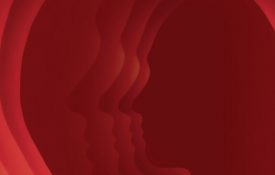-
What’s All This About Journaling?
It was my ex-husband who got me journaling again. Our marriage was falling apart, and, on the advice of his friend, he had started to do “morning pages,” a daily journaling practice from the seminal self-help book “The Artist’s Way.” Though I had kept a diary throughout my teen years and early 20s, somewhere along the way I’d fallen out of the habit. At 29, though, I was deeply unhappy and looking for answers wherever — anywhere — I could find them. It helped. Once the domain of teenage girls and the literati, journaling has become a hallmark of the so-called self-care movement, right up there with meditation.
-

Cognitive Training Focused on Consequences May Promote Healthier Habits
Interventions to reduce unwanted behaviors often focus on retraining people’s mental associations, but showing people the consequences of the behaviors may be more effective.
-

New Research From Psychological Science
A sample of research exploring advice giving and motivation, mechanisms underlying face and expression processing impairments in autism, and visual perception in peripersonal space.
-
Black Space, White Blindness
In John Sayles’ 1984 movie The Brother From Another Planet, a card shark is riding a northbound A train that is about to make the 66-block jump from Midtown to Harlem. “I have another magic trick for you,” he says. “Wanna see me make all the white people disappear?” The conductor announces the train is going express, skipping the Upper West Side; white passengers disembark. The joke is a bit outdated; a 40-year exodus of black Americans and the more recent influx of gentrifying whites put blacks in the minority in Greater Harlem a decade ago. But it speaks to a familiar truth about the way that even urbane, liberal whites think about black neighborhoods: as places not to go.
-
Why we shouldn’t be too modest
Pride is the downfall of many a tragic hero. Mr Darcy has to let his go before he can earn Elizabeth Bennet’s love. Dante listed it as one of the seven deadly sins. And as the famous (and oft-misquoted) verse from Proverbs cautions us, it “goeth before destruction, and a haughty spirit before a fall”. There’s no question about it: we’re consistently told that pride makes us obnoxious at best and doomed at worst. But pride may not entirely deserve this reputation as a destructive force. There’s new evidence that this emotion has an evolutionary function, and that it plays an important role in the way that we interact with the world. This makes sense.
-
Growing up with Alexa: A child’s relationship with Amazon’s voice assistant
The first four words my toddler understood were "mom," "dad," "cat" and "Alexa." Cameron first recognized the name of Amazon's voice assistant while sitting, covered in spaghetti sauce, in his high chair. I'd no sooner said "Alexa" than he whipped his head around to look at the Echo speaker tucked behind the potted golden pothos on the bookcase. He'd heard me say "Alexa" plenty of times before (I often wondered if he thought it was the plant responding), but this time he knew the Echo would light up and say something.

